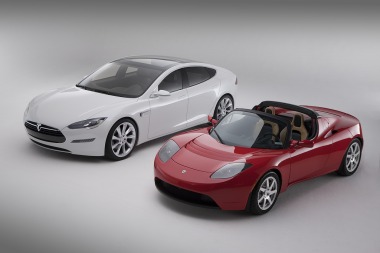Royal Academy: Prepare for electric cars
27 May 2010
Electric cars will reduce emissions at point of use, but their green credentials rely on the grid and a new generation mix to charge their batteries, warns the UK's Royal Academy of Engineering. A future UK fleet could need an additional 160 GWh per day.
 |
Electric cars will be clean, but what
about the power stations? |
The academy called on the UK government to develop a strategy for the expected switch to electric vehicles. One requirement for the technological mix is universal high-speed internet connection, which smart grid meters will need to use. Without that, a large number of electric car owners will not be coordinated with the larger grid. Furthermore, those drivers that cannot park on their own property must be accommodated by roadside or car park charging and local grid substations will need to be upgraded.
The actual development of electric vehicles is a lesser issue, with major car manufacturers approaching mass production of electric and series hybrid cars (in which an on-board engine charges the batteries). Nevertheless these need support - as do the early purchasers of their products. "There is an opportunity to integrate these policy areas and adopt a fully systems-based approach to ensure that that all work together and the critical links between them are explicitly recognised," said the academy in its report, Electric Vehicles: charged with potential.
An assumed 20 million vehicle fleet averaging 40 km/day and using 200 Wh/km requires some 160 GWh in additional power generation. This translates to an increase of 16% on winter loads for the UK and could be accommodated relatively easily if the cars were charged overnight. However, "this ideal is far from being practical," especially if large numbers of drivers are recharging while at work.
The UK already has targets to change its mix to include 20% renewable power by 2020 and commercial proposals for up to ten new large reactors, but this does not include the additional 160 GWh of low-carbon generation each day. Meeting this would require a further seven 1000 MWe nuclear power reactors or about six thousand 3 MWe wind turbines.
It is possible, the academy wrote, that the extra burden of charging vehicle batteries could sometimes be met just by renewables and nuclear and therefore bring dramatic emissions savings. However, other times could easily see batteries charged from fossil sources and lead to no significant emissions reduction at all.
Researched and written
by World Nuclear News